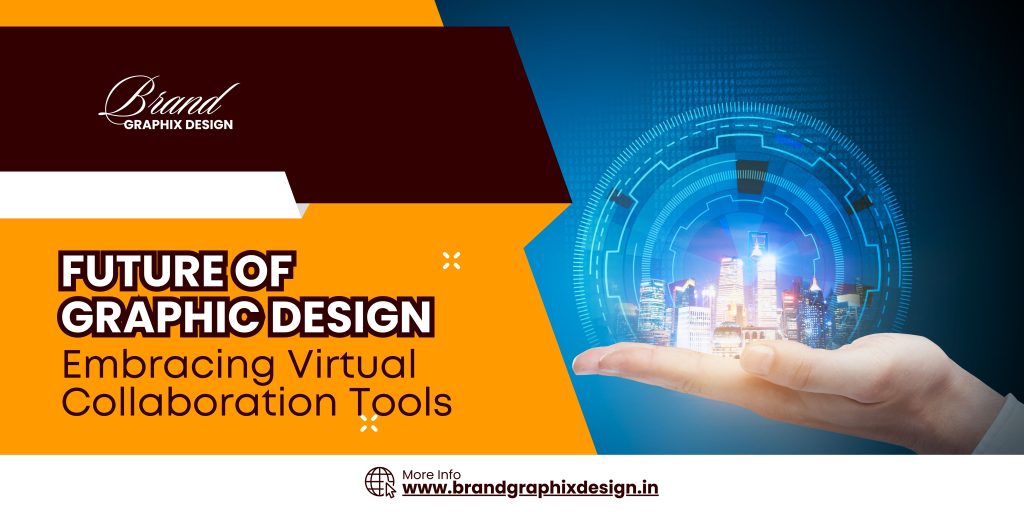The field of graphic design is experiencing a profound transformation with the emergence of virtual collaboration tools. These tools have revolutionized how designers work together, enabling seamless communication, enhanced creativity, and streamlined project management. In this comprehensive exploration, we delve into the evolving landscape of graphic design and the pivotal role of virtual collaboration tools in shaping its future.
The Evolution of Graphic Design with Virtual Collaboration Tools
Virtual collaboration tools have fundamentally altered the dynamics of graphic design by facilitating real-time interaction and collaboration among dispersed teams. Unlike traditional methods that often relied on physical proximity, these tools transcend geographical barriers, allowing designers to collaborate effortlessly from anywhere in the world.
Central to this transformation are platforms like Slack, Microsoft Teams, and Zoom, which facilitate instant communication through text, voice, and video channels. These tools not only ensure continuous connectivity but also foster a sense of camaraderie and shared purpose among team members, regardless of their physical location.
- Real-time editing and feedback
- Enhanced project visibility and accountability
- Streamlined file sharing and version control
By embracing these tools, graphic designers can significantly enhance their workflow efficiency and accelerate project timelines, resulting in quicker turnaround times and improved client satisfaction.
Advantages of Virtual Collaboration Tools in Graphic Design
Virtual collaboration tools offer numerous advantages that cater specifically to the needs of graphic designers:
- Enhanced Communication: Tools like Slack and Zoom facilitate seamless communication through instant messaging and video conferencing capabilities, ensuring clarity and responsiveness in team interactions.
- Efficient Workflow: Project management platforms such as Asana, Trello, and Basecamp empower designers to organize tasks, set deadlines, and track project progress in a systematic manner, thereby optimizing workflow efficiency.
- Remote Accessibility: Cloud-based tools like Google Workspace and Dropbox enable designers to access design files and collaborate in real time from any location, promoting flexibility and accommodating remote work arrangements.
These advantages collectively empower design teams to collaborate effectively, transcend physical boundaries, and deliver high-quality design solutions that meet client expectations.
Impact of Virtual Collaboration Tools on Design Creativity
Beyond facilitating efficient collaboration, virtual collaboration tools play a pivotal role in enhancing design creativity by fostering a collaborative environment conducive to innovation:
- Real-time brainstorming and ideation sessions
- Collaborative design prototyping and iteration
- Interactive feedback and design critique
These tools enable designers to engage in collaborative brainstorming sessions, share ideas instantaneously, and receive timely feedback, thereby stimulating creativity and pushing the boundaries of traditional design practices.
Moreover, platforms like Figma and Adobe XD offer collaborative design environments where multiple designers can work simultaneously on a single project, making it possible to experiment with new design concepts and iterate on ideas in real time.
Integration of Virtual Reality (VR) and Augmented Reality (AR) in Graphic Design
The integration of virtual reality (VR) and augmented reality (AR) technologies with virtual collaboration tools represents the next frontier in graphic design innovation:
- VR-powered design simulations and virtual walkthroughs
- AR-enhanced client presentations and visualizations
- Immersive design environments and interactive prototypes
These technologies offer graphic designers unprecedented opportunities to create immersive design experiences, visualize concepts in three-dimensional space, and engage clients in interactive design reviews.
By leveraging VR and AR technologies alongside virtual collaboration tools, designers can enhance user engagement, provide realistic design simulations, and deliver innovative solutions that resonate with clients and stakeholders.
Challenges and Solutions in Adopting Virtual Collaboration Tools
Despite their transformative potential, adopting virtual collaboration tools in graphic design presents several challenges that require careful consideration and proactive management:
- Technical Compatibility: Ensuring compatibility across different devices, operating systems, and internet bandwidths is essential to facilitating seamless communication and collaboration among team members.
- Security Concerns: Safeguarding sensitive design assets, client information, and intellectual property rights from unauthorized access and data breaches requires implementing robust security measures, encryption protocols, and access controls.
- Team Training and Adoption: Providing comprehensive training programs, tutorials, and user guides to familiarize design teams with the functionalities, features, and best practices of virtual collaboration tools promotes user adoption, proficiency, and engagement.
Addressing these challenges proactively enables graphic design teams to maximize the benefits of virtual collaboration tools, mitigate potential risks, and foster a culture of innovation, collaboration, and continuous improvement within the organization.
Future Trends in Virtual Collaboration Tools for Graphic Design
The future of graphic design will witness the continued evolution and integration of virtual collaboration tools with emerging technologies, driving innovation and reshaping industry practices:
- AI-driven Design Automation: Artificial intelligence (AI) technologies will automate routine design tasks, generate design suggestions, and enhance design accuracy and precision.
- Blockchain for Design Asset Management: Blockchain technology will revolutionize design asset management by providing transparent, secure, and immutable records of design ownership, usage rights, and revisions.
- Enhanced Virtual Meeting Experiences: VR and AR technologies will transform client presentations, design reviews, and team meetings by creating immersive virtual environments, facilitating real-time collaboration, and enhancing visual communication.
These trends underscore the transformative potential of virtual collaboration tools in driving innovation, enhancing productivity, and delivering unparalleled design experiences that meet the evolving needs and expectations of clients, stakeholders, and end-users.
Ready to embrace the future of graphic design with virtual collaboration tools? Contact us at +91 911 891 1171 to explore how these innovative tools can empower your design team, streamline your workflow, and elevate your creative output. Transform your design processes, enhance collaboration, and stay ahead of the curve with virtual collaboration tools tailored to meet your specific needs and objectives.


